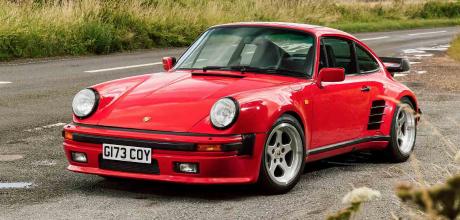1989 Porsche 911 Turbo S 930
Total 911 drives a special 930 given the ’S’ treatment by Porsche Exclusive. Is this the ultimate impact-bumper Turbo?
Written by Kyle Fortune
Photography by Ali Cusick
Sonder Whoosh 930 S driven
Kyle Fortune drives the rare 930 S, heralding from Porsche’s famous Sonderwunsch programme
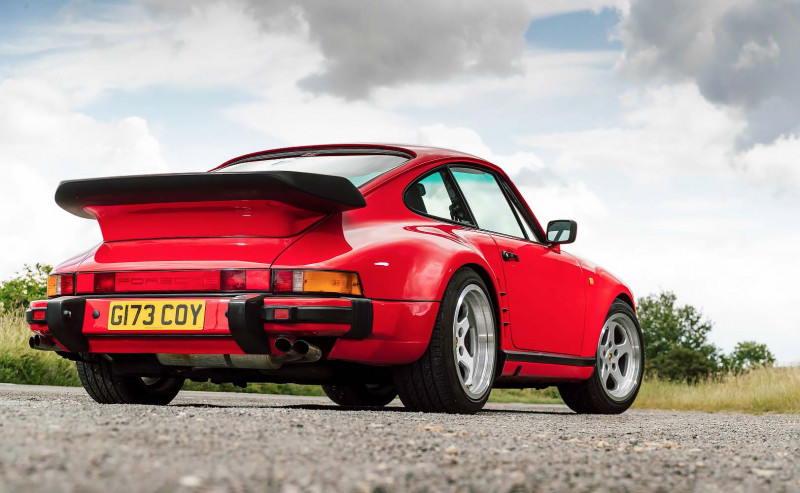
See what you think,” says Harry Metcalfe, the owner of this 930 Turbo S. Harry’s one of us, having set up the magazine Evo back in the day. The farmer, turned journalist and publisher, turned YouTube channel presenter on Harry’s Garage (and still farmer), has got it bad for 911s. At agricultural college, his textbooks on animal husbandry and crop rotation were joined by an anomalous copy of Paul Frère’s seminal book Porsche 911 Story. Harry’s particular interest was the 930. With a Lamborghini Countach and a Ferrari Testarossa occupying one of his farm buildings, the 930 is the 1980s hat-trick for the Athena poster generation.
“Its performance feels more like a contemporary turbocharged engine”
Harry has had a number of interesting 911s, but the 930 Turbo’s always been the car that’s resonated with him. He’s owned one previously, and while it was a beautiful example, he more often than not found himself gravitating to the Italians when the chance for a drive popped up. Even so, Harry had unfinished business with 930s – and when the Hairpin Company got this red example in stock, his interest was once again piqued.
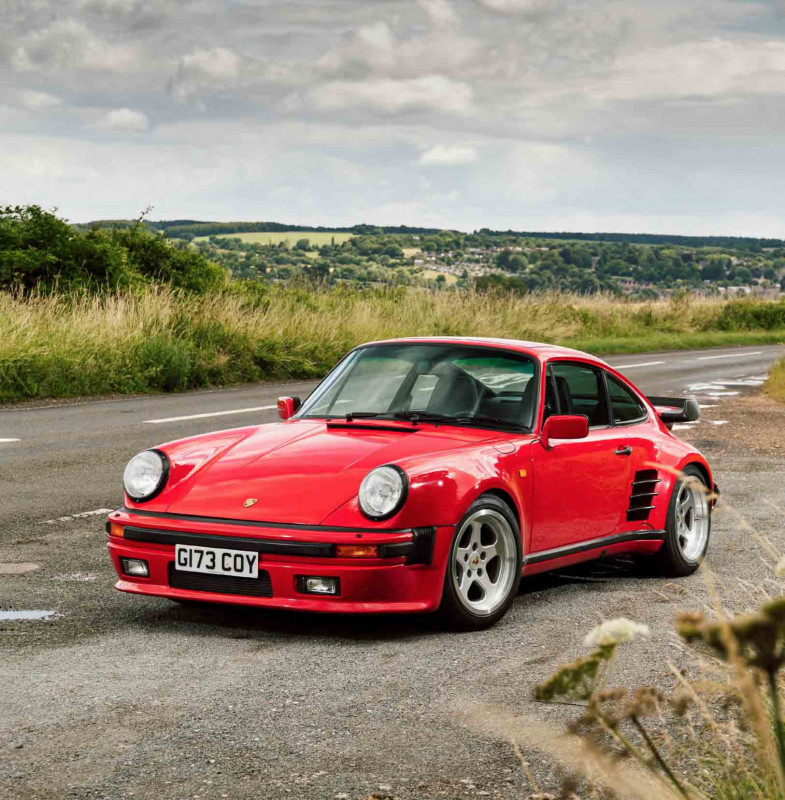
It’s clear from just looking at it that this is not a regular 911 Turbo. This particular example, a C03 California car, was ordered by noted Porsche enthusiast Kerry Morse, who has owned and raced some of Porsche’s most significant 935s. Such a high-profile customer wouldn’t just order a regular 930 – and this car is far from standard. The 1989 930 is one of the super-rare 911 Turbo S models that Porsche Exclusive would build for customers as part of its Sonderwunsch (‘special wishes’) programme.
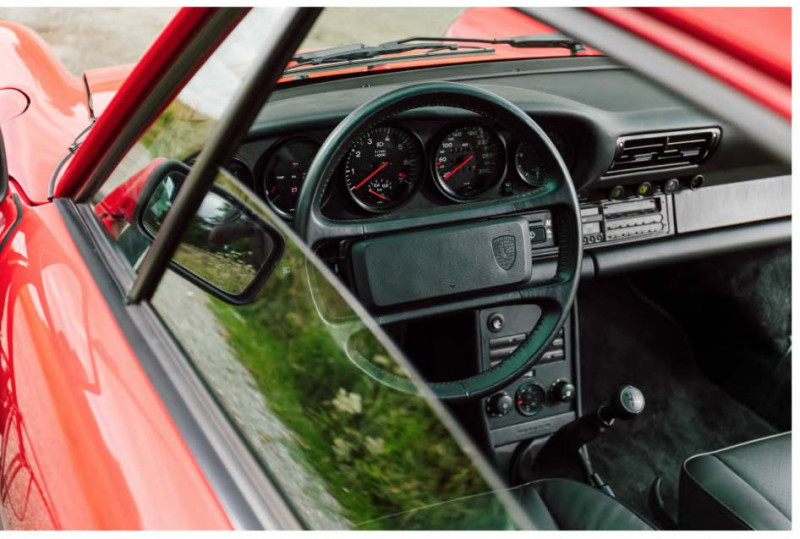
Harry admits that he’d never actually heard of a 930 S until he saw the car for sale. This isn’tsurprising: they’re little-known, aside from a few obscure internet references to a run of 10 all-black, individually numbered 930 S models ordered by Sonauto – a French Porsche distributor keen to capitalise on what was then anticipated to be the last of the 911 Turbo models. There’s no mention of them in Paul Frère’s otherwise exhaustive book. Exclusive’s work at the time was, very much as its name suggests, exclusive and clandestine for Porsche’s most favoured customers.
It did produce a brochure, though – which we’re poring over in Harry’s office, looking at the possibilities available to owners if they had deep pockets and the ear of Mr Elmar Willrett. His direct phone, telex and telefax numbers are printed in the brochure, alongside the tantalising statement, “This catalogue can only provide an outline of our major ‘customising’ activities – our repair department, in fact, can do a lot more.”
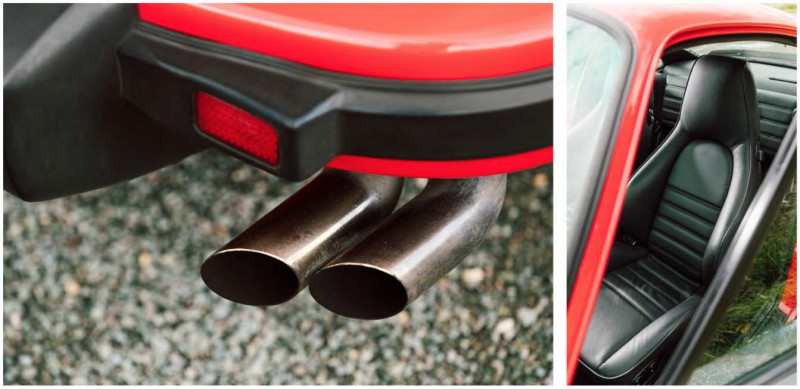
On the 930 S, those special wishes included a bigger K27 turbocharger, a four-pipe exhaust, and a bigger intercooler, as well as some revisions to the intake system, the result of which saw the power increase to 330hp (some 30hp greater than the standard car). Those changes necessitated the fitment of an additional oil cooler, positioned behind the unique, and great-looking, air dam up front. The chassis would benefit from some enhancements, too, with the 930 S gaining a sports suspension kit, which brings a 33mm drop in the front ride height and 27mm at the rear. The rear track was also widened by 35mm.
The S was supplied with a limited-slip differential and shorter shift for the five-speed, conventional H-pattern G50 gearbox. The bigger intercooler under the tea-tray rear spoiler left no room for a rearwiper, while another delete item was the badging: Turbo S customers evidently liked their cars to be as under the radar as the means of ordering them. The subterfuge only partially works here. Harry’s 930, finished in Guards red, is clearly a special car.
The paintwork is set off beautifully by the contrasting black that comes with all G-Series models, enhanced here with extra blackwork on the headlight surrounds, window trims and handles, as well as the strakes in the punctured intakes in front of the rear wheels. Their German description, “Lufteinlaß am Hinterkotflüge”, sounds fantastic, with those black fins within the aperture actually constructed from wood. The only brightwork outside is in relation to the 17-inch RUF Speedlines. These are not the wheels it was supplied on new – it was originally ordered on 16-inch, flat-dish Fuchs wheels – but they’re the first nod to the fact that there’s something even more interesting about this already rare-groove 930 S.
Having resided in the US for most of its early life, the car was eventually sent to Freisinger Motorsport in Karlsruhe, Germany, to be restored. Although it was no longer in Kerry’s ownership, it’s inconceivable that the people at Freisinger weren’t aware of the car given their links with him, with the car run by Manfred Freisinger as his personal vehicle for a period. Harry was fascinated to dig deeper into the car’s history: while the German registration document has it listed as a 3.3-litre car, the first time he drove it he knew there was more to it than even a 930 S.
Harry’s suspicions were proved to be correct when he took to the car to Steve Winter at JAZ Porsche, who immediately identified the fact that it was fitted with heads from Porsche’s group 4 934 racecar, and is in fact 3.4 litres in capacity. As such, it’s running bigger intake and exhaust ports – significantly so. It retains the same compression and valves, but runs a hotter cam with more overlap, to improve low-rev, off-boost response.
Whether those enhancements were made prior to its restoration or during it has yet to be ascertained, but with the original owner Kerry Morse having access to a sizeable collection of parts for his racing cars, it’s entirely feasible that he undertook the changes while the car was still in the US. As journalist Harry admits, he “loves a car with a story”, and there’s still some detective work to be undertaken to fill in some gaps in the backstory. And what do I think? Like Harry realised on his first test drive of the 930 S, there’s a lot going on. What’s immediately obvious getting in is just how new it feels: Freisinger’s restoration is absolutely immaculate. There’s no sign of the car’s age or previous use: it feels every bit as if Mr Willrett has just handed you the keys after you deposited a substantial cheque in Deutschmarks into the Exclusive department’s coffers. The steering wheel’s a four-spoke item, with the Porsche crest over to the right. The wheel diameter feels smaller than standard; it’s thought to be the same wheel as the 959.
Similarly, the seats, with their deep embrace, are said to have been taken from the 959 line. Like the rest of the interior, they’re finished in supple black leather. The rightness and tightness of the interior is shared with the drive, with the 930 Turbo S exhibiting absolutely no indication of its age here either. The gearshift moves across its gate with a quick, slick accuracy that’s incredibly pleasing, while the springing and feel of the clutch is similarly reassuring in its weight, the combination of the two an absolute delight. That they’re used to access the potential of what’s immediately obvious as a very special engine only increases the enjoyment.
There’s no bluster as you might think, given it’s running a racing 934 head. The flat six’s character out back is one of dignified restraint, at least in relation to the sounds emanating from it. On the move, that morphs into something that feels significantly different from any 930 I’ve ever driven: its performance feels more like a contemporary turbocharged engine than one that hails from an era of off-boost lethargy, then fireworks when the turbocharger comes into play.
Such is the immediacy of the low-rev response, and the corresponding increase in speed that it’s difficult to comprehend that this is both an ’89 car and one with a sizeable turbocharger attached to it. When the boost comes into play, it doesn’t come in with a sharp kick: instead, its arrival is signalled with a lengthy, sustained and substantial increase in pace. It’s no one-trick slingshot: the engine’s flexibility is remarkable, which gives it a maturity and effortlessness that’s incredibly appealing. It also feels substantially more powerful than the 330hp that the 930 S would have left Stuttgart packing – something that Harry has confirmed since it’s been in his ownership.
Those mighty engine enhancements are revealed not just on the road, but also on the dyno. The car’s visited Litchfield to have its output checked, and it’s clear that those 934 heads, differing cams and the exhaust have resulted in a significant gain. The rollers revealed that this 930’s producing 391.5bhp, or 397hp. That maximum is produced at 6,150rpm, with torque of 489Nm at around 5,200rpm. Looking at the smooth traces of the power and torque curves, it’s clear that those mighty numbers have been produced without any compromise. There are no spikes or troughs; the 3.4-litre engine’s output is sustained and impressive, and so it proves on the road.
It feels just right on the Cotswold country roads we’re driving along – roads Harry uses to test cars for his own YouTube videos, the tarmac offering a fine challenge to reveal any issues with the chassis. The 930 S feels wieldy here, light, its abundant power able to be enjoyed and, because of its scale, genuinely exploited. That’s aided by suspension that, although more focused in its nature, manages to balance taut control with a ride that’s rarely troubled by anything rolling under the rear wheels. The steering is a delight, the nose eager to turn in, in a manner that’s unusually enthusiastic for a 930 of this era. The diff and the wider track undoubtedly help with the car’s agility in the bends.
What’s really notable is the sophistication it delivers: there’s an abundance of grip and traction. It’s confidence-inspiring and enabling here, allowing the 930 Turbo S to really reveal the depth of its ability and carry its pace with real ease.
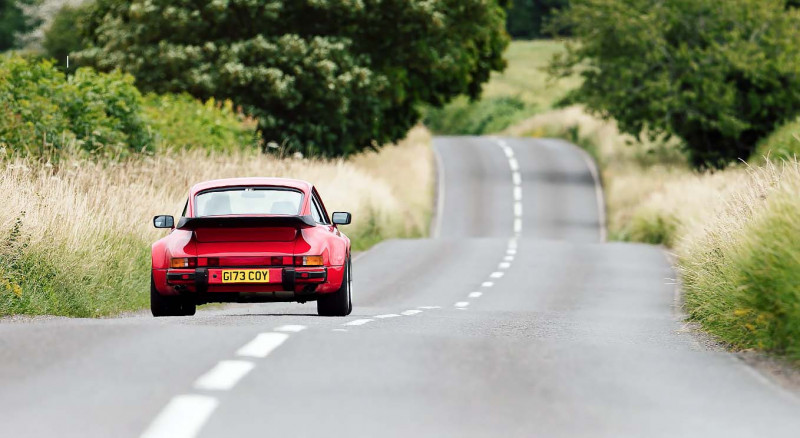
That’s at odds with some of the other 930 experiences I’ve had. The boostier nature of their delivery made for punctuated progress: in comparison, this car’s linearity and faithfulness of response, both in relation to the throttle and the steering and braking, make it feel so much more exploitable and hugely enjoyable.
Harry admits he’s prone to grabbing the keys for it frequently, which doesn’t come as a surprise, because it’s so rounded and capable that it really does feel like a realistic daily driving proposition. That’s somewhat at odds of my expectations of it, given its special build, and indeed the fitting of elements from Porsche’s racing cars.
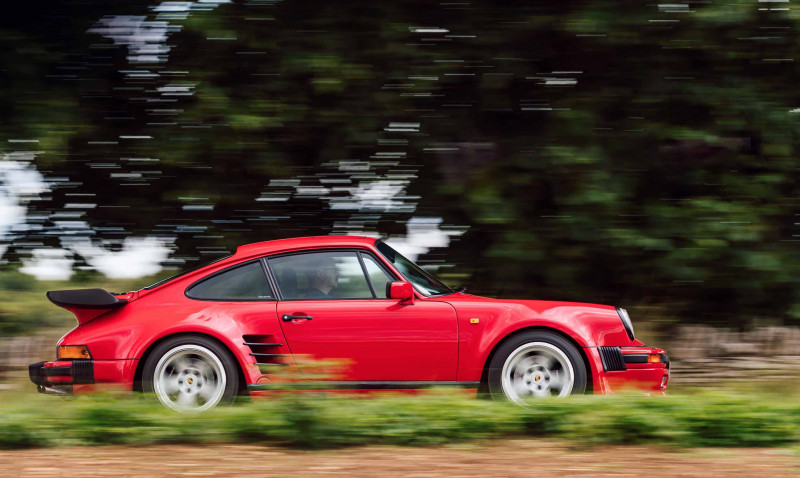
This is a car of contradictions: its mightier power is not at the expense of driveability, and indeed proves to be beneficial to it. That it feels so tight and new is testament to the quality of the restoration it underwent, and it’s not like it’s been secreted away since: Harry is happy to wind on miles, whether as a daily or on lengthier trips abroad.
It’s a car with a story, plus illustrious previous and current owners – and one that will be interesting to revisit when Harry unearths some more details about its early life and when the engine changes were made to it. What’s certain: whenever they were done, and whoever they were done by, they’ve created a special version of an already special car.
Total 911 verdict
The 930 Turbo S is a rarity, and this one’s even more special thanks to its previous owners’ further enhancements of it. A car for all occasions, this is an incredible all-rounder that engages and delights, with the kind of performance that’ll keep even its modern relations very honest.
Mighty performance, and the ability to exploit itLack of full backstoryBELOW A four-pipe exhaust and sports suspension help to lend this 930 S a distinctive rear profile.
RIGHT Now in the possession of Harry Metcalfe, this 930 Turbo S has an illustrious backstory, yet still holds on to some secrets.
BOTTOM The central VDO dial features the later 930’s iconic boost gauge.


